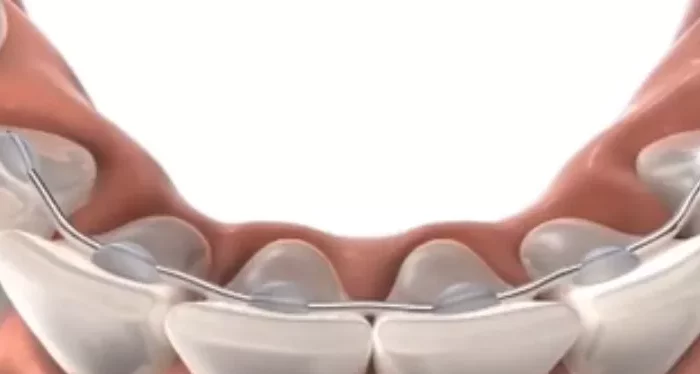Orthodontic treatment is a specialized field of dentistry that focuses on correcting malocclusions, or problems with the alignment of the teeth and jaws. There are three main classifications of orthodontic treatment, each of which is designed to address different types and degrees of malocclusion.
1. Preventive Orthodontic Treatment
Preventive orthodontic treatment is designed to prevent or intercept malocclusion before it becomes severe. This type of treatment is typically recommended for children between the ages of 7 and 9, when the teeth and jaws are still developing.
The goal of preventive orthodontic treatment is to guide the growth and development of the teeth and jaws, and to prevent more serious malocclusions from developing.
see also: 7 Reasons for Orthodontic Treatment
Common types of preventive orthodontic treatment include
1. Space maintainers: These are used to hold space for permanent teeth that have not yet erupted, and to prevent adjacent teeth from shifting into the space.
2. Palatal expanders: These are used to widen the upper jaw, which can help to correct crossbites and create more space for crowded teeth.
3. Habit appliances: These are used to help children break harmful oral habits, such as thumb-sucking or tongue-thrusting, which can cause malocclusion.
2. Interceptive Orthodontic Treatment
Interceptive orthodontic treatment is designed to address malocclusion that is already present, but is not yet severe. This type of treatment is typically recommended for children between the ages of 7 and 11, when the teeth and jaws are still developing. The goal of interceptive orthodontic treatment is to correct malocclusion before it becomes more severe, and to guide the growth and development of the teeth and jaws.
Common types of interceptive orthodontic treatment include
1. Braces: These are used to straighten crooked or crowded teeth, and to correct bite problems such as overbites, underbites, and crossbites.
2. Headgear: This is used to correct bite problems by applying pressure to the upper jaw and teeth.
3. Retainers: These are used to hold teeth in their corrected positions after braces are removed, and to prevent them from shifting back to their original positions.
3. Comprehensive Orthodontic Treatment
Comprehensive orthodontic treatment is designed to address more severe malocclusions that require more extensive treatment. This type of treatment is typically recommended for adolescents and adults, when the teeth and jaws have finished developing. The goal of comprehensive orthodontic treatment is to create a healthy, functional, and aesthetically pleasing smile.
Common types of comprehensive orthodontic treatment include
1. Braces: These are used to straighten crooked or crowded teeth, and to correct bite problems such as overbites, underbites, and crossbites.
2. Invisalign: This is a clear aligner system that can be used to straighten teeth without the use of traditional braces.
Orthognathic surgery: This is a surgical procedure that is used to correct severe bite problems that cannot be corrected with braces or other orthodontic appliances.
In addition to the three main classifications of orthodontic treatment, there are also other types of orthodontic treatment that may be recommended depending on the specific needs of the patient. These include:
1. Adult orthodontics: This type of treatment is designed specifically for adults who did not receive orthodontic treatment as children, or who have experienced relapse after previous treatment. Adult orthodontics may involve traditional braces, clear aligners, or other orthodontic appliances.
2. Surgical orthodontics: This is a combination of orthodontic treatment and orthognathic surgery, which is used to correct severe bite problems that cannot be corrected with braces or other orthodontic appliances alone.
3. Lingual braces: These are braces that are attached to the back of the teeth, making them virtually invisible from the front. Lingual braces are a good option for patients who want to straighten their teeth without the visible appearance of traditional braces.
4. Self-ligating braces: These are braces that use a special clip instead of elastic bands to hold the wire in place. Self-ligating braces can reduce the amount of friction between the wire and the brackets, which can result in faster treatment times and fewer adjustments.
5. Accelerated orthodontics: This is a type of treatment that uses special techniques to speed up the movement of the teeth, resulting in shorter treatment times. Accelerated orthodontics may involve the use of special appliances, such as AcceleDent or Propel, or may involve surgical procedures such as corticotomy or piezocision.
It is important to note that the type of orthodontic treatment recommended for each patient will depend on a variety of factors, including the age and development of the patient, the severity of the malocclusion, and the patient’s personal preferences and goals. A qualified orthodontist will work with each patient to develop a customized treatment plan that meets their specific needs and goals.
Conclusion
There are three main classifications of orthodontic treatment: preventive, interceptive, and comprehensive. Each type of treatment is designed to address different types and degrees of malocclusion, and is recommended based on the age and development of the patient, as well as the severity of the malocclusion. With the help of orthodontic treatment, patients can achieve a healthy, functional, and aesthetically pleasing smile.
Related topics:

